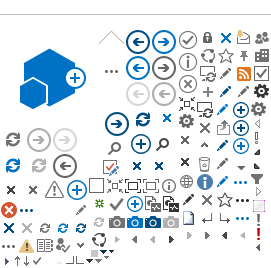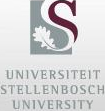??“We've been busy," Prof Johann Mouton remarked at a recent conference marking the 30th anniversary of Stellenbosch 中国体育彩票's Centre for Research on Evaluation, Science and Technology (CREST).
With that, the Director of the Centre summed up three decades of serious intellectual labour – and remarkable institutional achievement – in typically understated fashion.
“I grew up in a Calvinist household. My parents always said never to boast," he added with a smile. “So this is not boasting. This is what I'm proud of – what we've achieved, and what we've built with the help of many people."
And the list is long. Since its founding, CREST has produced:
- 29 books, cited 14 434 times
- 230 book chapters and 448 journal articles, cited 12 945 times
- More than 200 research reports and 1 200 conference presentations
- 40 seminars and conferences, and over 60 workshops
- 1 878 graduates
Even a cursory reading of the CREST story, said Prof Sibusiso Moyo, Deputy Vice-Chancellor: Research, Innovation and Postgraduate Studies, shows how the Centre has enhanced the standing of SU. In her opening remarks at the anniversary conference, she commended CREST for “exceptional contributions" and delivering “unparalleled performance and impact" that has been “recognised nationally and internationally".
Impact for Africa
The conference also saw the launch of the African Science, Technology and Innovation Leaders' (ASTIL) Forum – a significant new initiative. The Forum brings together six founding organisations, collectively representing some of the continent's most influential and respected bodies in the field: the African Academy of Sciences, Network of African Science Academies, Association of African Universities, African Research Universities Alliance, Science for Africa Foundation, and the Science Granting Councils Initiative, represented by the National Research Foundation of South Africa.
A story in three chapters
Prof Mouton divided CREST's 30-year journey into three distinct stages.
Its genesis phase (1995–2003) began with the Centre's establishment as the Centre for Interdisciplinary Studies (CENIS). Early academic offerings included an M.Phil in Social Science Methods (1996) and an M.Phil in Science and Technology Studies (1997).
In the same year, the Centre participated in a national Research and Technology Audit – a pivotal early milestone. This produced important new data on the publication patterns of South African academics, laying the foundation for what became the South African Knowledgebase.
“That's our baby," Mouton said affectionately of the pioneering database combining publication metrics with demographic information.
By 2003, the Centre had refocused and adopted its current name – a reflection of its growing identity as a hub for research evaluation, scientometrics and science, technology and innovation (STI) policy.
CREST's growth phase (2004–2013) saw a steep increase in externally funded projects, particularly in scientometrics and STI policy. It also included the founding of the African Doctoral Academy (ADA), now housed within SU International, and the establishment of a national Research Directors' Forum. During this period, CREST launched a suite of academic programmes in monitoring and evaluation (M&E), in response to growing demand in government and civil society.
Then came the sustainability phase (2014–2024), characterised by exponential growth in output, data infrastructure and income generation – which reached R438 million by the end of last year.
The Centre was awarded:
- the DST-NRF Centre of Excellence in Scientometrics and STI Policy (SciSTIP) in 2014
- a SARChI Chair in Science Communication in 2015
- an SU Chair in Science Futures in 2024
A recent external evaluation noted: “The review panel found that SciSTIP may be regarded as a national asset for South Africa and the continent. Its work is of high quality, at the level of excellence, and has had an important and highly relevant impact on the National System of Innovation."
In December 2024, the Department of Science, Technology and Innovation renewed SciSTIP's funding for a further five years.
“It was astonishing," Mouton said. “They effectively gave us carte blanche, asking us to work towards establishing a fully-fledged national STI Observatory – something South Africa has never had."
Little wonder then that Prof Moyo described CREST as “an excellent prototype to use for establishing sustainable future centres and schools within SU and the higher education sector."
Recipe for success
CREST's strategic value to the country has been repeatedly demonstrated. Over the past three decades, the Centre has produced more than 50 strategic planning reports for South African universities. It also continues to influence national science policy debates.
So what is the secret behind CREST's sustained success?
Calling the Centre “a rather interesting animal", Mouton credited its impact to a clear long-term vision, consistent planning, good people – “and a lot of hard work," he added, only half joking.
Prof Deresh Ramjugernath, who was still Vice-Chancellor designate when he delivered the vote of thanks at the gala dinner on 19 March, captured it succinctly: “This milestone is a testament to your commitment to advancing knowledge and shaping the future of science, technology and innovation in this country."
* Photograph by Ignus Dreyer/SCPS ?
Desmond Thompson is a freelance journalist.


